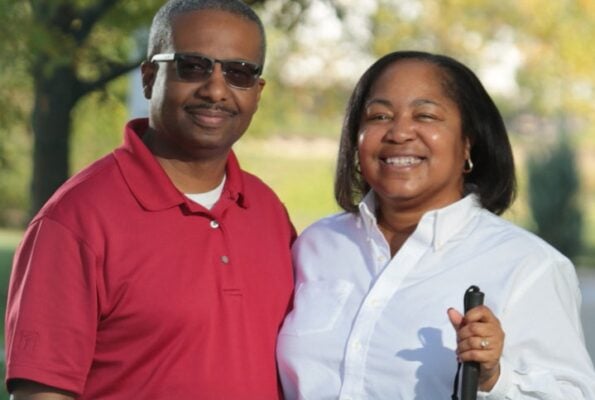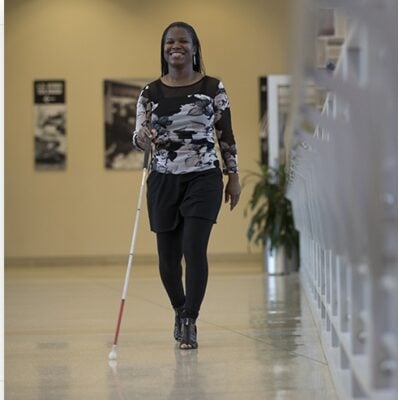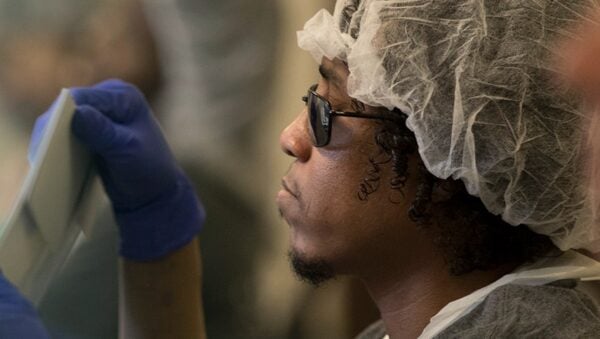The Bosma Visionary Opportunities Foundation unveiled the White Cane Society, a new donor program that highlights and celebrates those who champion its mission of empowering individuals who are blind or visually impaired.
“Rates of vision loss are steadily increasing and are on track to double by 2050 due to our aging population,” said Brandon Wells, executive director of the foundation. “As we prepare to support an influx of people with vision loss, we are excited to announce the creation of this society to sustain our center and its vision rehabilitation and training services which are more crucial than ever.”

The White Cane Society is named after the iconic tool that symbolizes independence for those navigating vision loss. A white cane is one of the first tools provided during rehabilitation, marking the beginning of a journey toward self-reliance. By joining the White Cane Society, donors play a pivotal role in supporting this journey and the programs that make it possible.
“Over the years, we’ve realized that there are better ways to celebrate (the supporters), acknowledge their participation in funding our programs and just create a little more excitement around what they bring to the table and how they support our clients,” Wells said.
The White Cane Society offers three membership tiers, each with unique benefits that recognize and engage donors. Perks include:
- Recognition in newsletters and on the donor board.
- Access to a quarterly newsletter featuring exclusive giveaways.
- Complimentary access to events, such as Fore! The Cause, a signature fundraising event.
- Invitations to the annual rehab center tour and networking dinner.
- Voting rights on annual grants.

Through these benefits, members are not only acknowledged for their generosity but are also given a platform to engage with the community and witness the tangible impact of their contributions.
“The reason we called it the White Cane Society is because the white cane is not only the first tool that a blind or visually impaired person learns to use to live independently, it’s also very symbolic,” Wells said. “When you see someone with that white cane walking down the street, you know that they’re suffering from vision loss. What we want you to know after that is that they’re not suffering. They’re learning to live independently with that as an aid.”

Funds raised by the White Cane Society directly support the Bosma Center for Visionary Solutions, which provides rehabilitation programs at little or no cost to blind or visually impaired individuals. Services offered range from daily living skills training and job placement assistance to counseling and customized rehabilitation programs.
“Between endowment building and addressing immediate need, we’ve really created this ecosystem where wherever you’re at in your journey on vision loss, you’re going to have the support you need,” Wells said. “That’s important because we are the only organization that serves the adult blind population from a comprehensive standpoint.”
Since its inception, the foundation has worked tirelessly to create opportunities for individuals with vision impairments to live independent, fulfilling lives. Corporate partnerships, special events and ongoing fundraising initiatives allow the Foundation to address a growing need for these essential services.

As the population ages, the need for vision rehabilitation services continues to grow. By joining the White Cane Society, donors ensure that resources are available to meet this demand and that individuals with vision loss can access the support they need to thrive.
For more information on how to join the White Cane Society or learn more about Bosma Visionary Opportunities Foundation, visit bosma.org/foundation.
This reporting is made possible by a grant from the Indianapolis African-American Quality of Life Initiative, empowering our community with essential health insights. https://iaaqli.org/
Contact Health & Environmental Reporter Hanna Rauworth at 317-762-7854 or follow her on Instagram at @hanna.rauworth.
Hanna Rauworth is the Health & Environmental Reporter for the Indianapolis Recorder Newspaper, where she covers topics at the intersection of public health, environmental issues, and community impact. With a commitment to storytelling that informs and empowers, she strives to highlight the challenges and solutions shaping the well-being of Indianapolis residents.






